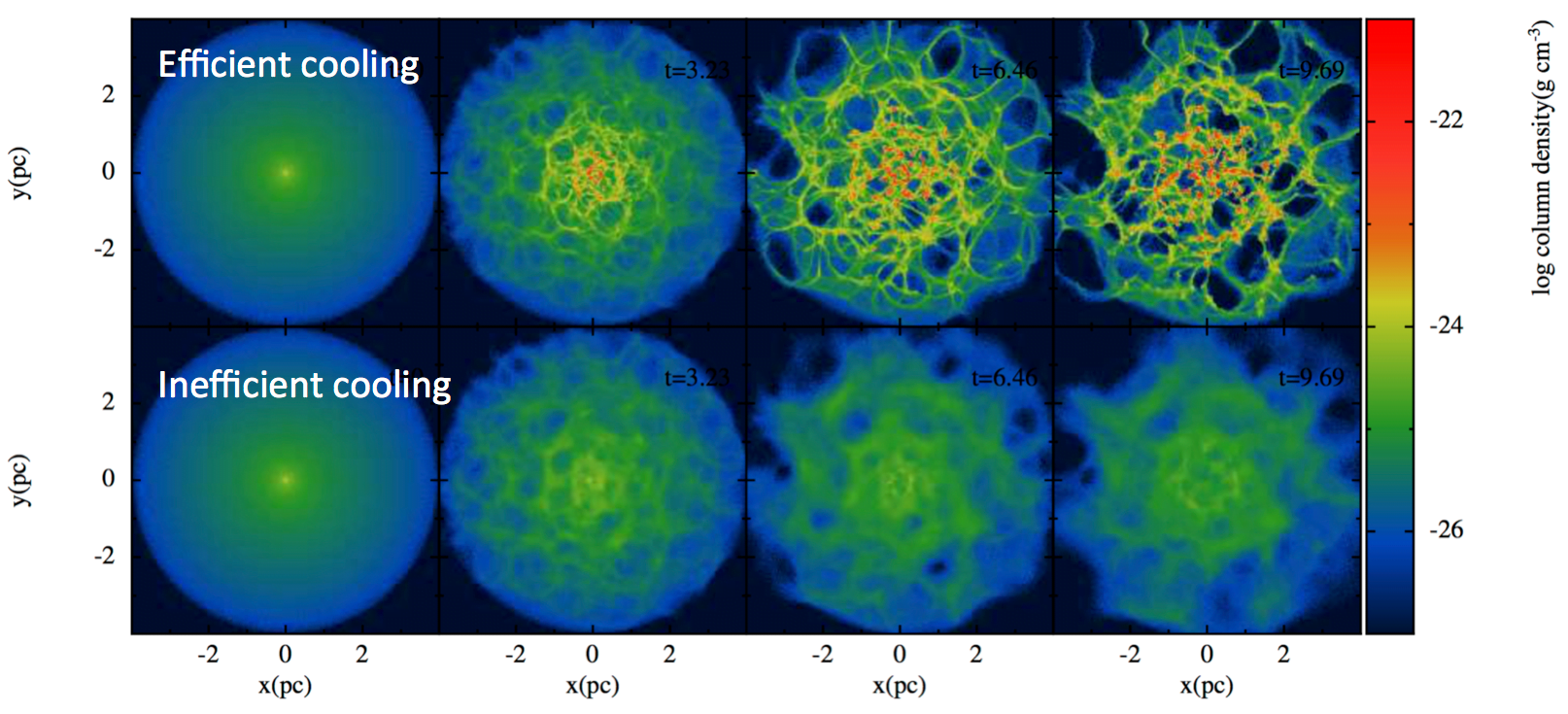There is a wealth of observational evidence that super-massive black holes (SMBHs), millions to billions of times the mass of our Sun, lurk in the nuclei of most galaxies. Determining the origin and assembly history of SMBHs over cosmic time is challenging, both observationally and theoretically, but correlations between the properties of SMBHs and their host galaxies may contain important clues.
Of particular interest is the relationship between SMBHs and the nuclear star clusters (NCs) that encompass them in the centres of many galaxies. Do NCs form in-situ and co-evolve with growing SMBHs, or do they migrate from larger radii within the galaxy and so have a looser connection with the SMBH? Do these different formation scenarios leave their imprint on the correlations between SMBH and NC properties that can be used to derive observational tests? How does feedback in the form of stellar winds, photo-ionization, and supernovae influence the properties of the NC, the growth of the SMBH, and correlations between the NC, SMBH, and host galaxy?
The PhD student will address these questions by developing detailed supercomputer models of the formation and evolution of star-clusters in the centres of galaxies, of the kind shown in the Figure, and applying the insights gained from these models in galaxy formation simulations. This work will draw on state-of-the-art codes that we have developed with colleagues in Europe, and will exploit our access to world-class high performance computing facilities in Australia. The student will also have unique opportunities to collaborate with world-class scientists at UWA and collaborators in Australia, the UK, and Switzerland.

Figure: Strong winds from young stars in NCs can drive turbulence and the growth of instabilities in gas within the nuclear regions of galaxies. Depending on how efficiently this gas can cool, these winds will be more or less efficient at expelling gas that would otherwise form stars and/or growth the central SMBH. From Bourne & Power 2016.